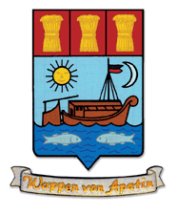Short History of Apatin
Apatin / Abthausen - a large Danube Swabian municipality in the district of Batsch [Batschka]
Founded in 1749 as a German market town
The district of Batsch is located in the south-eastern part of the Pannonian Plain, situated between the rivers Danube and Tisza.
Before 1945 about 250.000 Germans lived there in numerous townships. The largest German community in this Danube Swabian settlement area with market rights was Apatin on the Danube. These Germans,
usually called "Danube Swabians", immigrated after the expulsion of the Turks by the imperial armies [“Holy Roman Empire of the German Nation”, House of Habsburg] since 1683 as settlers to the liberated Hungarian country. Under the reign of Empress Maria Theresa (1740 – 1780) the settlement of German farmers and citizens in the district of Batsch
continued. In 1739 the first Germans appeared in Apatin, in 1749 church and community were established. In 1768 600 German families lived in Apatin, to which the Empress granted market rights. Apatin
was the center of German immigration. Recruited by imperial promoters in Anterior Austria, Alsace-Lorraine and various German districts, the settlers arrived overland or with simple wooden ships
(Ulmer Schachteln and Kelheimer Plätten). They found swamp and desert, misery and death. The swell of immigration took place in successive waves, in smaller and larger Swabian treks, the so called
"Schwabenzüge".
In decades of tireless struggle against nature and malaria, the German settlers succeded. A fertile and blossoming country was developed, which rewarded trouble and sweat with bountiful harvest. Apatin became a model and center for the surrounding new settlements . Instead of the first settlers’ modest homes , more solid and spacious houses were built during the following years. And also a new bigger church, a grand city hall – besides several elementary schools, an intermediate school (Realschule) for boys and girls, the German high school (Gymnasium) and the second church. With the progressive industrial and agricultural economy prosperity and contentment prevailed. Decades and centuries passed in peaceful coexistence with other nations and religious denominations. Everything was renewed, improved and brought to highest level.
Then came the disastrous Second World War, which was the end of a more than 250-years long era for the ethnic group of the Danube Swabians.
Years have passed since and the Apatin inhabitants (Apatiners) are scattered all over the world. On Assumption Day [August 15, Virgin Mary's Assumption; Kirchweih in Apatin], they meet in different countries and celebrate the church anniversary of Apatin (Kirchweih), remembering the old home and their loved ones, they had to leave behind.
Abstract from: Apatiner Beiträge, Band 15, Josef Mayer ALS WIR NOCH DAHEIM LEBTEN, Apatiner Bilder von gestern und heute, Straubing 1978.
„Apatin – Abthausen von Josef Mayer“. Publisher: Apatiner Gemeinschaft
e. V., 844 Straubing, Dr. Heiß-Str. 38
Remarks on the text are in square brackets.
Translated by Astrid Hess


